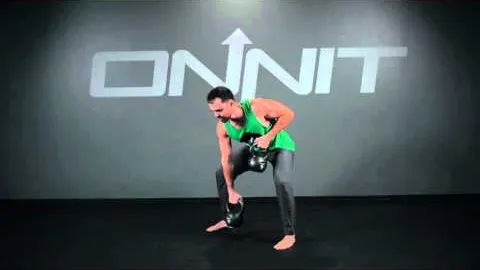The Alternating Kettlebell Bentover Row: A Comprehensive Exercise Guide
The Alternating Kettlebell Bentover Row is a fantastic exercise for targeting the muscles of the upper back, including the rhomboids, latissimus dorsi, and posterior deltoids. This exercise not only strengthens these muscles but also improves posture and enhances overall upper body strength and stability. In this comprehensive guide, we will discuss the proper technique, benefits, variations, and key tips for performing the Alternating Kettlebell Bentover Row.
Technique:
- Starting Position: Stand with your feet shoulder-width apart and knees slightly bent. Hold a kettlebell in each hand with an overhand grip.
- Bending Over: Hinge at the hips, keeping your back straight and chest up. Maintain a slight bend in your knees throughout the movement.
- Rowing Movement: Pull one kettlebell upwards until it reaches the side of your torso, squeezing the shoulder blades together. Lower the kettlebell back down under controlled motion, returning to the starting position.
- Alternating Sides: Repeat the rowing movement with the opposite arm while maintaining proper form. Continue alternating sides until the desired number of repetitions is completed.
It is important to emphasize that maintaining a straight spine and a neutral neck position is crucial during this exercise. Be cautious not to round your back or strain your neck. Remember to engage your core muscles to stabilize your body throughout the movement.
Key Benefits:
- Increased Upper Body Strength: The Alternating Kettlebell Bentover Row targets several major muscles in the upper back, which, when strengthened, can improve overall upper body strength.
- Improved Posture: By targeting the muscles responsible for retracting and depressing the scapulae, this exercise can help correct poor posture caused by excessive slouching or hunching.
- Enhanced Stability: Performing this exercise challenges your core muscles, improving overall stability and balance.
- Reduced Risk of Injury: Developing strong upper back muscles can help alleviate stress on the spine, reducing the risk of injury and promoting healthy movement patterns.
Variations:
- Double Kettlebell Bentover Row: Instead of using one kettlebell in each hand, use two kettlebells simultaneously. This variation adds an extra challenge to the exercise, increasing the overall difficulty and intensity.
- Single-Arm Kettlebell Bentover Row: Perform the exercise using only one kettlebell at a time, rowing with one arm while the other arm is extended down. This variation allows for greater focus on each side of the back individually.
- Renegade Row: Begin in a plank position with the kettlebells in each hand. Perform a row with one arm while maintaining proper plank form. Return the kettlebell to its starting position and repeat on the opposite side. This variation not only targets the upper back muscles, but also engages the core and stabilizer muscles more intensively.
Key Tips:
- Start with Light Weights: Begin with lighter kettlebells to focus on proper form and technique. Gradually increase the weights as your strength and proficiency improve.
- Maintain Good Hip Hinging: Correct hip hinge technique is essential for preventing lower back strain and maximizing the benefits of the exercise. Focus on keeping your spine neutral and bending from the hips.
- Control the Movement: Avoid using momentum to lift the kettlebells. Maintain control throughout the entire exercise, both during the lifting and lowering phases.
- Breathe Properly: Inhale at the starting position and exhale as you pull the kettlebell upwards. Deep breathing helps stabilize your core and maintain overall control.
- Warm-up and Stretch: Prior to performing the Alternating Kettlebell Bentover Row, it is crucial to warm up your muscles and stretch them to prevent injury and ensure optimal performance.
Incorporating the Alternating Kettlebell Bentover Row exercise into your fitness routine can greatly benefit your upper back strength, stability, and overall posture. Start with the basic technique, gradually increase the weights, and explore variations to keep the exercise challenging and engaging. Remember to prioritize proper form and alignment, and always consult with a fitness professional before starting a new exercise program.
